Friggaphobia
/Some sailors, like us for instance, are superstitious about Fridays, especially Fridays which fall on the 13th of the month. Here's a repost from October 2012 that's most appropriate for today ... Happy Friday the 13th!!
Read MoreSome sailors, like us for instance, are superstitious about Fridays, especially Fridays which fall on the 13th of the month. Here's a repost from October 2012 that's most appropriate for today ... Happy Friday the 13th!!
Read MoreToday we are looking back to a visit to a farm in Waroona, Australia. We met Laurie and John at our Just A Little Further presentation the other night at the Club and sat next to them at dinner that same evening. Laurie is an American who fell in love with Australia when she visited during her university years more than 50 years ago and subsequently emigrated, married John and raised her family here. John is a native South Australian whose family has farmed and raised cattle for export for generations. When they invited us out to their farm in Waroona, we couldn't believe our luck and jumped at the chance.
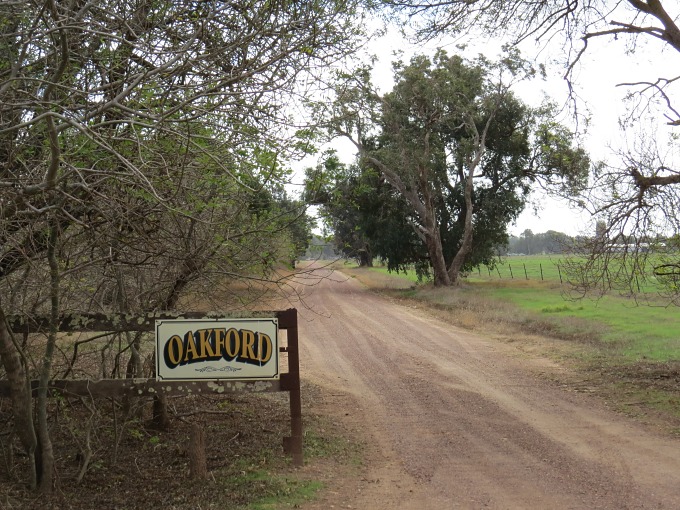
We took the 35-minute scenic route to the pleasant little town of Waroona (population ~2,000). Laurie remembers a time when the roads were all dirt and hand-dug irrigation ditches for watering the fields were the norm. She took us to the top of the Waroona Dam which supplies water for the farm, which now uses huge pieces of irrigation equipment. Laurie's knowledge of the area made all the difference. She's authored a book about the area, in fact, entitled Drakesbrook Days and Waroona Years: An Illustrated History of Waroona Shire.
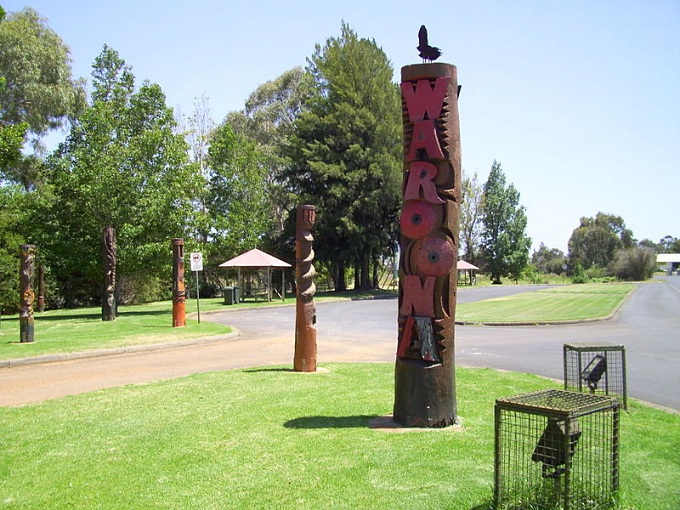
Their 2,000 acre farm is only one of three family farms in the area. Additionally, they lease over 3 million acres of government grazing lands in the Western Australia outback as cattle stations. The trek out to their stations, where the bulk of their beef cattle are kept, is an arduous 16+ hours over rough 4-wheel drive roads. Laurie showed us a panoramic picture taken from a few years back. John explained that the horses and camels originally used to muster (round-up) the cattle have been replaced by 4-wheel drive vehicles and helicopters.
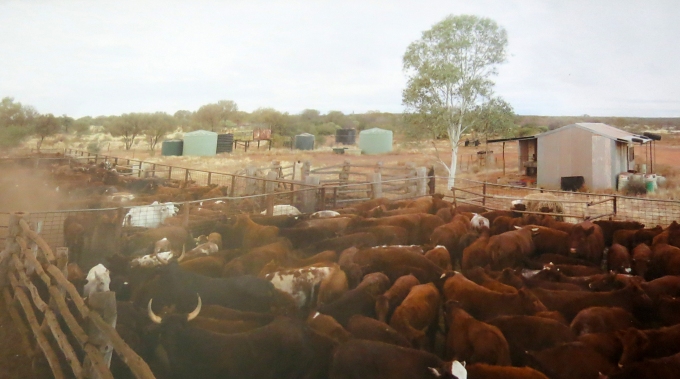
Laurie and John still live in the family homestead which has been added onto over the years. The first section of wooden clapboard was built in the late 1890's with a brick addition added in the 1920's. An enclosed breezeway connects the two and serves as a place for morning tea. A picket fence encloses the front yard where roses were still in bloom. A stately old Moreton Bay fig tree shades the yard. A major renovation is planned soon which will upgrade the house using modern materials including the addition of central heating.
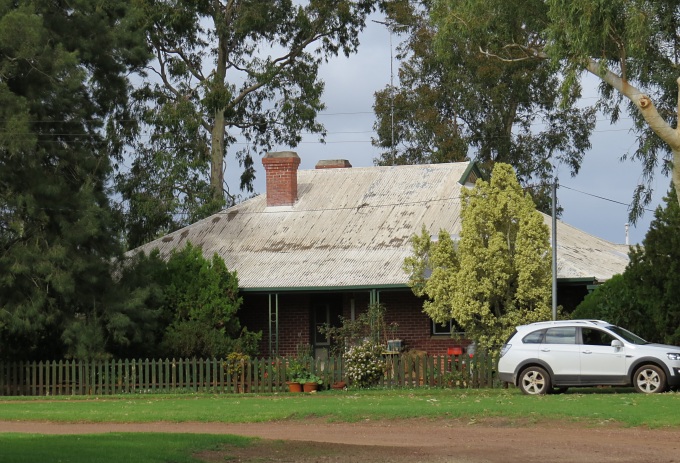
When we arrived, all hands were involved in “drafting”, the process of weighing and sorting the cattle, in this case heifers, which were bound for Israel as live export. The cattle are primarily Shorthorns with an occasional cream-colored Australian Droughtmaster in the mix.
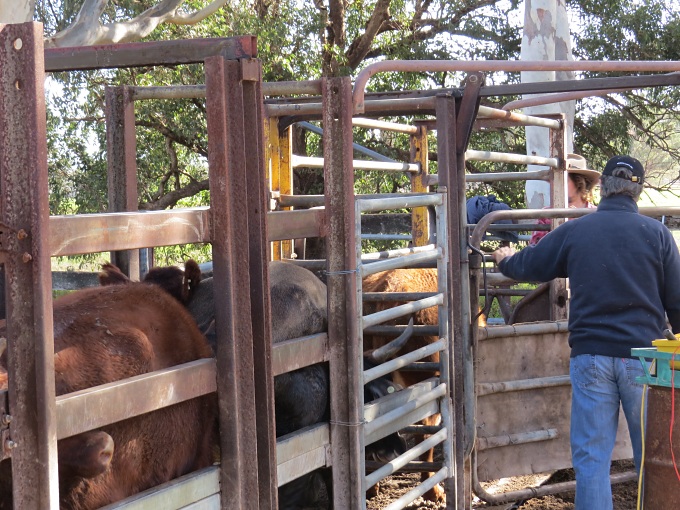
Closer to the house, we spotted four little calves frolicking around in a corral. These little guys were orphans and being raised by hand. I asked about feeding them and Laurie said it was done by a Calf-eteria, a system of feeding the calves when the mother was not around. Clever name, huh? There was also a lone alpaca in the corral, recently shorn … not sure how he got on with the calves, but it didn't seem to be a problem.
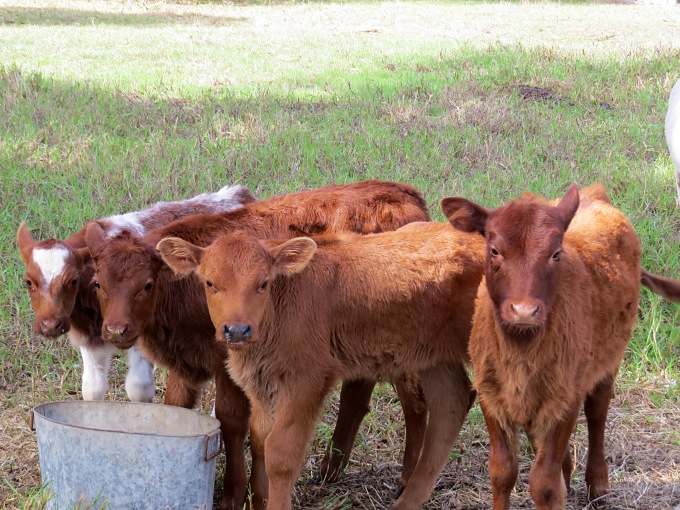
It's not that David and I have never been on farms before. My aunt and uncle owned a huge poultry farm and I spent many weeks every summer as a kid feeding chickens and collecting eggs. Another aunt and uncle owned milking cows and we spent lots of time in the barn and worked hard during haying season bringing in the harvest. David participated in a couple of trail drives on horseback in Colorado bringing cattle from the summer to winter grazing grounds. Certainly, however, visiting a farm in another country is a novelty and seeing how things are done and what things are called made for an interesting day and a significant change from being on Nine of Cups.
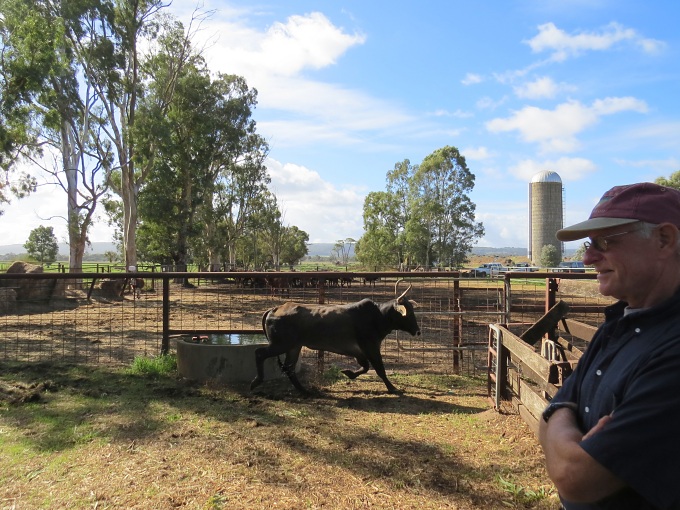
Our passage from Geraldton, Western Australia to the Cocos Keeling Islands in the Indian Ocean was idyllic. We could not have asked for better weather, better winds or better conditions. (Okay, that 10th day sucked, but the good days were really good! ) Here's our photo journal of the trip and our passage stats: Planned miles: 1422 Actual Miles: 1468
Days at sea: 10.5 Average speed: 5.8 kts
Flying fish: 14 Squid: 4 Birds: 1 Edible fish: 0
Humpback whale breaching just off our port beam
A red-tailed tropic bird did frequent flyovers.
A dramatic sunrise on the Indian Ocean
The captain resorts to brute force (and hammer) to coax a jammed whisker pole into service.
Nine of Cups sailed downwind wing-on-wing for most of the passage. Our poor American flag looks a bit worse for the wear.
Winds and waves were big at times. We saw up to 40 knot gusts and lots of green water over the bow.
Flying fish come in different sizes.
Squids are sticky … especially on the mainsail.
Moonset is no competition for sunrise.
Arrival at beautiful Cocos Keeling Atoll
Hi there and welcome to Just A Little Further!
We are David and Marcie Lynn and we've lived aboard our Liberty 458 cutter-rigged sailboat since 2000.
What began as an urge to travel slowly and economically at our own pace ended up an adventure of a lifetime.
Well, here we are ... nearly 90,000 miles under the keel, 5 continents, 5 Great Southern Capes, 36 countries and almost two decades later, still taking one passage at a time and going just a little further.